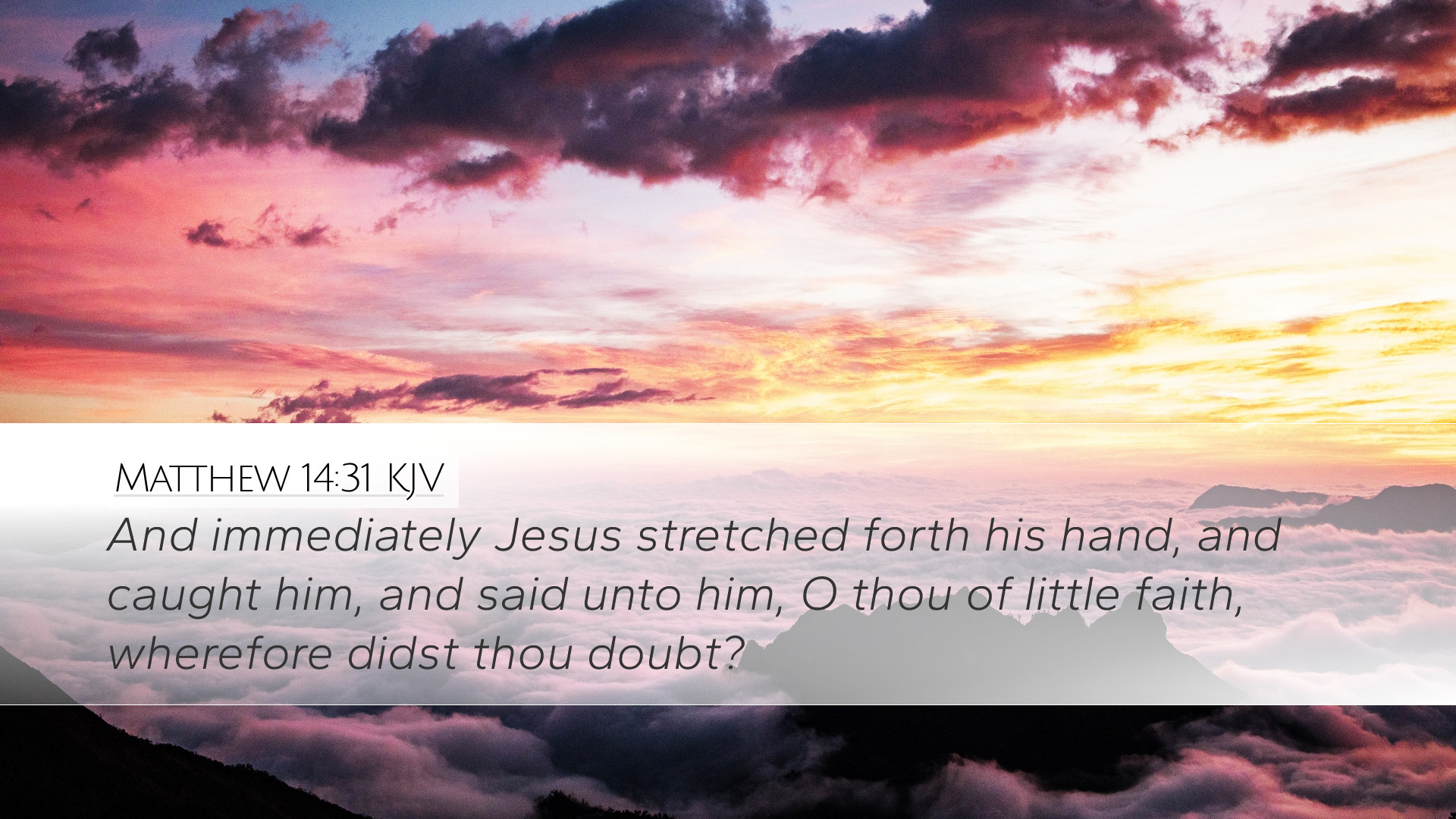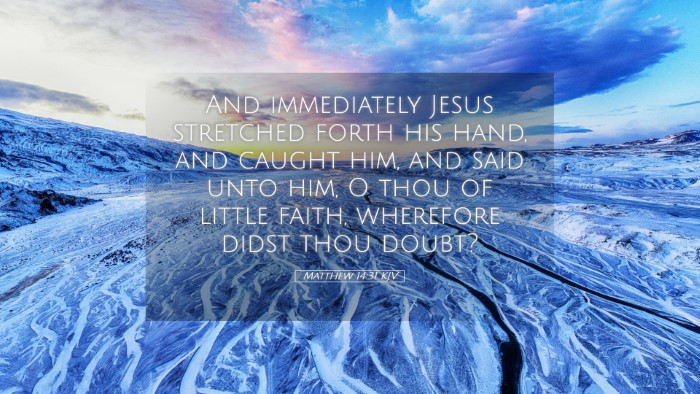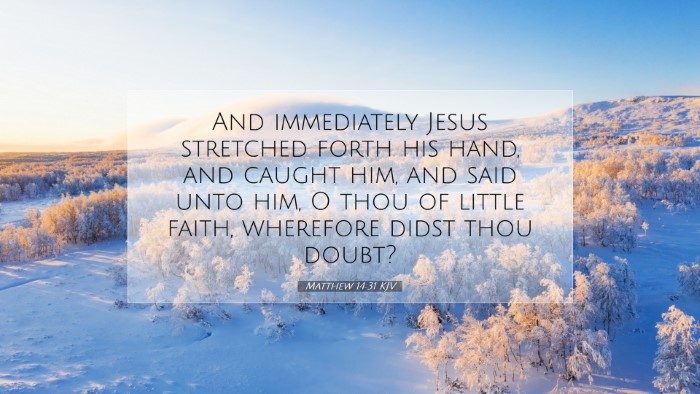Bible Commentary on Matthew 14:31
Verse: Matthew 14:31 - "And immediately Jesus stretched out His hand and caught him, and said to him, 'O you of little faith, why did you doubt?'"
Introduction
This poignant moment between Jesus and Peter offers rich insights into the themes of faith, doubt, and the compassionate nature of Christ. The incident occurs during a supernatural event where Peter walks on water, only to falter and doubt under the tumultuous circumstances. The examination of this verse through the lens of various public domain commentaries helps us discern profound theological truths relevant not only for personal faith but also for pastoral application.
The Context of the Passage
Matthew 14 recounts the miraculous feeding of the 5,000 and proceeds to describe Jesus sending His disciples across the Sea of Galilee while He goes to pray. A storm arises, and the disciples, overwhelmed by fear, see Jesus walking on water. This remarkable scenario sets the stage for Peter’s bold request to join Jesus, ultimately leading to the crisis of faith captured in verse 31.
The Act of Peter Walking on Water
Peters' experience of walking on water symbolizes the extraordinary faith that believers might exhibit when they keep their eyes steadfastly on Christ. Matthew Henry emphasizes that Peter's initial success in walking was due to his focus on Jesus, signifying how faith allows believers to perform the impossible when they trust in the Savior.
Faith and Doubt
The phrase “O you of little faith” illustrates a critical theological point. Albert Barnes notes that this expression of “little faith” indicates a genuine but weak faith that can falter in the face of trials. The susceptibility of believers to doubt—especially in precarious situations—reveals both the human condition and the grace that Christ extends in response to our failures.
Human Weakness
Human frailty is highlighted in Peter's experience. Adam Clarke notes that while Peter exhibited immense courage and willingness to step out, his faith was not yet fully formed. This duality of courage and weakness serves as a reminder to believers that even in our strongest moments of faith, we are susceptible to doubt. The acknowledgment of our limitations before God leads us to rely more heavily on His strength.
The Hand of Christ
Jesus’ immediate response—stretched out His hand—is a powerful image of divine intervention. Matthew Henry points out that this act is not only physically saving Peter but spiritually affirming him. The act of Jesus catching Peter symbolizes that when believers falter, God's grace and mercy are readily available to lift them out of their despair.
The Call to Faithfulness
Jesus’ question, “Why did you doubt?” is not merely rhetorical but serves as a teaching moment for Peter and the other disciples. Albert Barnes suggests that this inquiry encourages introspection regarding the nature of faith amidst adversity. It prompts the believers not only to confront their doubts but also to grow stronger in their faith through such challenges.
Application for Believers
For modern-day believers, this verse stands as a reminder of the assurance and hope that exists within the relationship with Christ. Like Peter, individuals may find themselves in turbulent waters, whether physically, emotionally, or spiritually. Recognizing that Jesus is ever-present, ready to save in moments of distress, serves to cultivate a resilient faith.
The Nature of Christ’s Authority
In the broader context of Matthew 14, the narrative establishes Christ's authority over nature and the circumstances that frighten humanity. Peter's experience reinforces the truth that though storms may arise, Jesus is sovereign and capable of overcoming any obstacle. Adam Clarke interprets this incident as a profound lesson on the power of faith that can allow believers to navigate tumultuous aspects of life with Jesus' support.
Conclusion
Matthew 14:31 encapsulates a transformative encounter between the Lord and His disciple. The journey from faith to doubt and back again underscores the dynamic relationship believers have with Christ. As pastors, scholars, and students reflect on this passage, may it encourage a deeper understanding of faith's complexities and the unfathomable grace of God that upholds His people.
Key Takeaways
- Faith in Action: Peter's willingness to step out illustrates that faith must be lived and not merely professed.
- Experience of Doubt: Doubt is a natural part of the journey of faith and does not negate the authenticity of one's belief.
- Christ's Compassion: Jesus extends His hand to those who falter, symbolizing the grace that reaches out to rescue us in our need.
- Reflection and Growth: Believers are called to reflect on their doubts and use them as opportunities to deepen their faith.
- Recognition of Authority: Christ's power over nature encourages believers to trust Him in all aspects of life.


